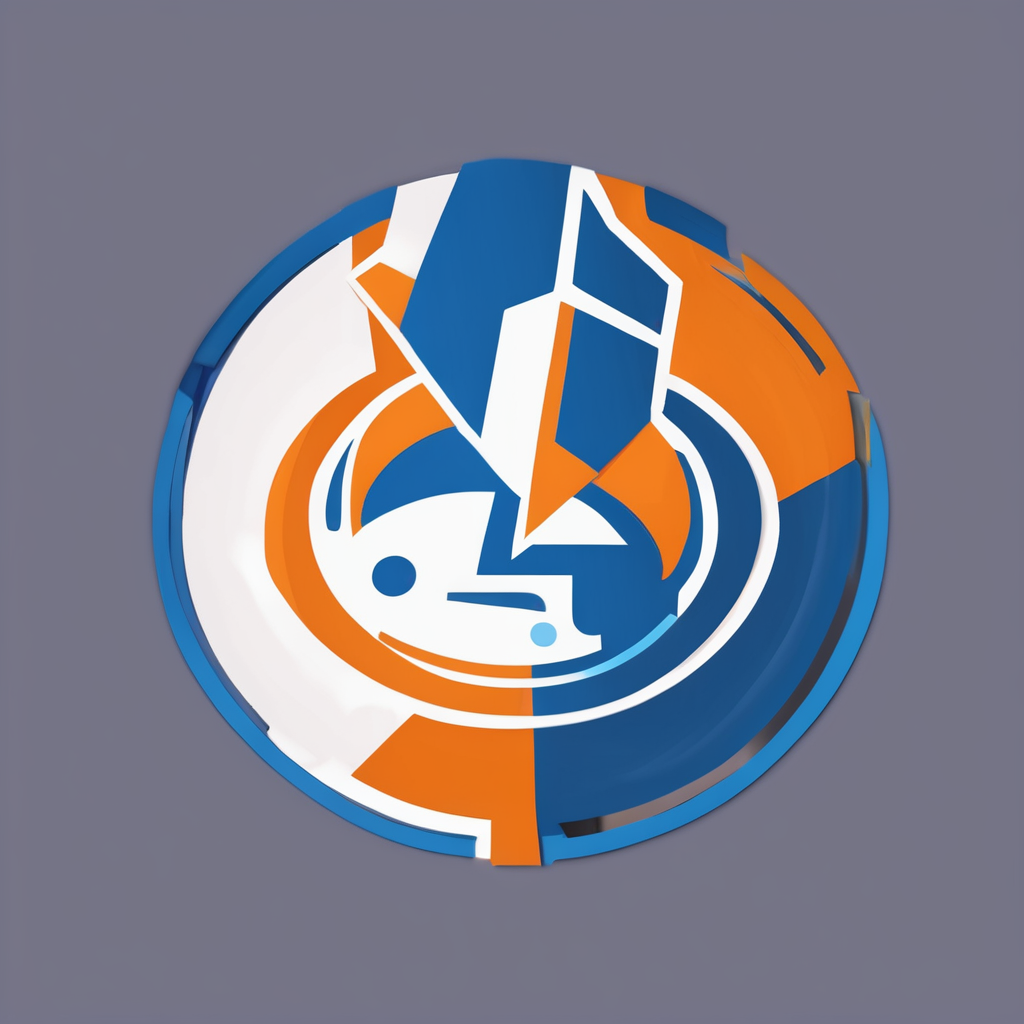Unlocking BMX Success: Harnessing Video Analysis to Boost Your Racing Tactics
The Power of Video Analysis in BMX Racing
In the fast-paced and highly competitive world of BMX racing, every fraction of a second counts. One of the most effective tools for gaining an edge over the competition is video analysis. This technique, widely used in various sports, allows riders to scrutinize their performance, identify areas for improvement, and refine their strategies.
How Video Analysis Works
Video analysis involves recording a rider’s performance during training or competitions and then breaking down the footage frame by frame. This can be done using specialized software or even simple video editing tools available on most smartphones. Here are some key steps in the video analysis process:
This might interest you : Achieving tranquility before the glide: key techniques for ice skaters to manage nerves and enhance performance
- Recording: Capture high-quality video of the rider from multiple angles. This could include cameras mounted on the bike, at the track, or even drone footage.
- Review: Watch the video multiple times to get a comprehensive view of the performance.
- Analyze: Use software to slow down, speed up, or pause the video to focus on specific moments, such as starts, turns, and jumps.
- Feedback: Provide constructive feedback to the rider based on the analysis. This could include suggestions on body position, pedal timing, and cornering techniques.
Strategies for Effective Video Analysis
To get the most out of video analysis, it’s crucial to have a structured approach. Here are some strategies that top BMX riders and coaches use:
Focus on Key Elements
When analyzing video, it’s important to focus on specific elements that can significantly impact performance. Here are some key areas to consider:
In parallel : Discover exciting pistol gel blasters for endless play
- Start Technique: The start is critical in BMX racing. Analyze the rider’s gate position, reaction time, and initial acceleration.
- Cornering: Cornering is where many riders lose time. Look at the rider’s body position, lean angle, and pedal stroke.
- Jumping: Proper jumping technique can save seconds. Analyze the rider’s approach speed, takeoff point, and landing technique.
- Pedaling Efficiency: Efficient pedaling can maintain high speeds. Look at the rider’s pedal stroke, cadence, and power output.
Use Comparative Analysis
Comparing the rider’s performance against that of top competitors or even their own previous performances can provide valuable insights. Here’s how to do it:
- Side-by-Side Comparison: Use software to place two videos side by side, allowing for a direct comparison of techniques.
- Split-Screen Analysis: Split the screen to compare different parts of the track or different riders simultaneously.
Incorporate Data and Metrics
Combining video analysis with data from other sources can enhance the insights gained. Here are some metrics to consider:
- Speed and Time: Use GPS and timing data to measure speed and time over different sections of the track.
- Power Output: Use power meters to measure the rider’s power output during different phases of the race.
- Heart Rate and Cadence: Monitor heart rate and cadence to understand the rider’s physical exertion and efficiency.
Real-World Examples and Case Studies
To illustrate the effectiveness of video analysis, let’s look at a few real-world examples:
Matthias Dandois: A BMX Legend’s Approach
Matthias Dandois, a nine-time BMX flatland world champion, has spoken about the importance of video analysis in his career. In his autobiography, Figure du bitume, Dandois mentions how he would record his tricks and analyze them to perfect his technique. This meticulous approach helped him innovate and push the boundaries of what was possible in BMX flatland.
Team GB’s BMX Program
The British Cycling team, which includes BMX riders, has a robust video analysis program. Coaches use advanced software to analyze every aspect of the riders’ performance, from starts to finishes. This detailed analysis has contributed significantly to the team’s success in major events, including the Olympic Games.
Practical Insights and Actionable Advice
Here are some practical tips for riders and coaches looking to integrate video analysis into their training programs:
Invest in Quality Equipment
- High-Resolution Cameras: Use cameras that can capture high-resolution video to ensure clear footage.
- Specialized Software: Invest in software designed for sports analysis, such as Hudl or Kinovea.
Create a Structured Analysis Process
- Set Clear Goals: Define what you want to achieve from the analysis, whether it’s improving start times or cornering techniques.
- Involve the Rider: Make sure the rider is involved in the analysis process to get their feedback and insights.
Use Video Analysis in Training Programs
- Regular Review Sessions: Schedule regular review sessions to analyze footage and provide feedback.
- Webinar and Blog Resources: Utilize webinars and blog posts from experts to learn new techniques and stay updated on best practices.
Table: Comparing Video Analysis Tools
Here is a comparative table of some popular video analysis tools:
| Tool | Key Features | Cost | User Level |
|---|---|---|---|
| Hudl | Advanced tagging, slow-motion, side-by-side comparison | Subscription | Advanced |
| Kinovea | Free, open-source, supports multiple file formats | Free | Beginner |
| SportsCode | Detailed analytics, customizable reports | Subscription | Advanced |
| Dartfish | Real-time analysis, mobile app | Subscription | Intermediate |
| Gamebreaker | Simple, user-friendly interface, cloud storage | Subscription | Beginner |
Quotes from Experts
- “Video analysis is not just about watching yourself ride; it’s about understanding the intricacies of your performance and making data-driven decisions to improve.” – British Cycling Coach
- “I couldn’t have achieved my level of success without video analysis. It allowed me to refine my techniques and innovate new tricks.” – Matthias Dandois
Elevate Your Performance: Integrating Video Analysis into Your Cycling Routine
Mental Health and Resilience
Video analysis can also play a role in maintaining mental health and resilience. By focusing on specific aspects of performance, riders can reduce stress and anxiety related to overall performance. Here’s how:
- Focus on Progress: Analyze progress over time to see improvements, which can boost morale.
- Constructive Feedback: Provide constructive feedback that focuses on improvement rather than criticism.
Team Dynamics and Collaboration
Video analysis can be a powerful tool for team collaboration. Here’s how teams can use it:
- Team Review Sessions: Hold regular team review sessions to analyze performances collectively.
- Shared Insights: Share insights and feedback among team members to foster a collaborative environment.
Global Events and Competitions
In major global events like the Olympic Games, video analysis is crucial for peak performance. Here’s how it can be used:
- Pre-Event Analysis: Analyze the track and competitors before the event to develop strategies.
- Real-Time Analysis: Use real-time analysis during events to make immediate adjustments.
Video analysis is a game-changer in BMX racing, offering a detailed and data-driven approach to improving performance. By focusing on key elements, using comparative analysis, and incorporating data and metrics, riders and coaches can transform their training programs. Whether you’re a professional rider or just starting out, integrating video analysis into your cycling routine can elevate your performance, enhance your strategies, and ultimately lead to success in this high-energy and competitive sport.
Additional Resources
For those looking to dive deeper into video analysis and its applications in BMX racing, here are some additional resources:
- Webinars: Look for webinars hosted by sports analysis companies that focus on BMX and cycling.
- Blog Posts: Follow blogs from experienced coaches and riders that share tips and insights on video analysis.
- Training Programs: Join training programs that include video analysis as a core component.
By leveraging these resources and incorporating video analysis into your training regimen, you can unlock new levels of performance and achieve your goals in the world of BMX racing.











